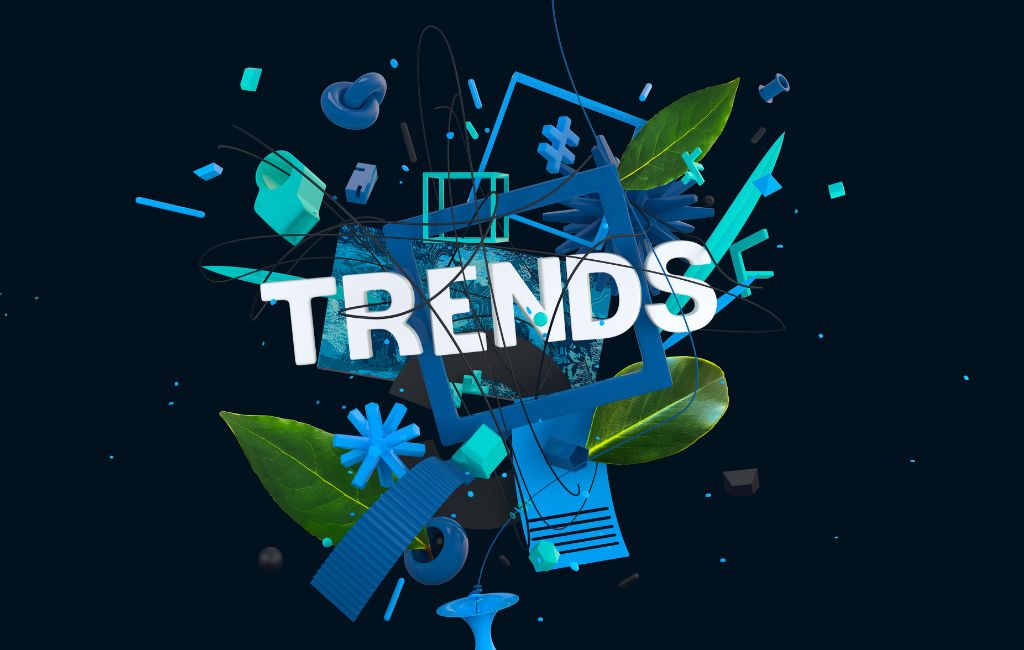Top 5 Amazing Web3 Trends To Watch In 2023
New technological changes impact the way people access digital services and assets. One such advancement for altering the traditional norms of accessing online applications and services is Web3. In recent years, there has been a significant increase in the focus on web3 trends. Why? Almost every company looking for new digital transformation opportunities wants to be ready for the future. Web3 trends, on the other hand, suggests a particular kind of internet future.
Today, practically every business relies on the internet in some capacity for its operations. It is crucial to understand how changes to the web may impact people. Furthermore, the ongoing expansion of talks surrounding web3 has revealed the enthusiasm surrounding web3 trends 2023. Numerous cryptocurrency projects in the web3 space received negative news, including the failure of the FTX exchange and DeFi in 2022. Despite the downturns, web3 projects have continued to move forward at a steady clip. The discussion that follows will assist in identifying some of the most significant trends in the web3 sector anticipated in 2023.
Why Is There a Need for Concern Over Web 3.0 Trends?
Different presumptions about the web3 area have emerged due to the differing opinions of web3’s potential and use cases. You should be aware that the term “web3” does not apply to a single technology. Instead, it includes a number of trends that might be used to define a decentralised internet. Big internet firms like Google and Facebook do not have authority over the emerging decentralised web. Despite recent challenges in the blockchain and cryptocurrency sectors, interest in web3 trends 2023 has been growing strongly. Why is web3 gaining so much attention from everyone?
The fundamental concept of web3 is to build online spaces using tools like blockchain, NFTs, cryptocurrencies, and DAOs. In decentralised internet environments, users could have total ownership over their possessions and data. Web3 provides the framework for constructing digital democracies without the involvement of centralised middlemen. Web3 gives users back control and establishes new standards for transforming their digital interactions with various goods and services. Knowing the most recent web3 trends might help you predict how the sector will grow in 2023. The market trends might be used to confirm the prospective effects of web3 and the developments it would bring about.
Web 3.0 trends for 2023
Concerns about the top web3 trends are inevitable for blockchain and cryptocurrency aficionados as the world enters a new era in 2023. Most importantly, the rest of the tech world has been keeping track of web3 advancements. Businesses are interested in learning more about web3 to find new applications for it that could alter their processes, systems, and operations. Here are a few of the most significant web 3.0 trends to watch out for in 2023.
1. Independent Metaverse
The metaverse is one of the web3 domain’s most often discussed highlights. Popular digital behemoths like Facebook and Microsoft have begun to explore concepts for the next phase of the internet’s development. However, the idea of a metaverse in the web 3 future would be far different from what the tech titans had in mind. The metaverse must evolve as a common universe that might accept the views of various proponents instead of centralising immersive platforms.
Right present, The Sandbox and Decentraland are the most well-known instances of a decentralised metaverse. These decentralised metaverse platforms’ underpinning data processes are kept on the Ethereum blockchain. Therefore, the decentralised metaverse platforms’ elements could only be modified, deleted, or added by users with legitimate authorization. Users don’t have to worry about censorship because the server storing metaverse data is not owned centrally. Contrarily, metaverse platforms like the one Facebook is building would always be at the whim of the business. One of the key features of the web3 blockchain trends for 2023 would be decentralised virtual environments. The sector can anticipate that new trailblazers will pave the way and provide the groundwork for creating additional decentralised metaverse platforms.
In 2023, interest in metaverse initiatives would continue to rise even as the idea of decentralised metaverse platforms gained ground. According to a McKinsey survey published in June 2022, almost 66% of consumers supported moving daily tasks to the metaverse. Over $120 billion was invested in metaverse projects in the first five months of 2022. Only $57 billion was spent on metaverse projects in 2021. Web3 trends also highlight investor and brand activities to close the gaps between the real and virtual worlds. Numerous well-known companies, like Starbucks, Nike, Adidas, and Gucci, have made use of the metaverse’s intriguing elements. The web3 community can anticipate some ground-breaking innovations in the field of the metaverse in 2023 as the push for decentralised metaverse platforms picks up steam.
2. Non-Fungible Tokens’ Usefulness
The utility-based NFTs would be the next strong trend in web 3. The advantage of uniqueness for an asset represented on the blockchain is provided by non-fungible tokens. NFTs are the perfect tool for displaying special assets. However, the majority of the debates around NFTs centre on how they are used in digital art. In 2021, NFT artwork became a powerful trend that laid the groundwork for fresh NFT collections like Bored Ape Yacht Club and Rare Pepes. It’s interesting to note that NFT artwork brought in hundreds or even millions of dollars for its producers and sellers. The web3 trends for 2023, however, underline how non-fungible tokens might be used for purposes other than proving ownership of digital works of art.
According to Web3 specialists, there will be more advantageous use cases for NFTs in the future of a decentralised network. Non-fungible tokens can promote the tokenization of information, property rights, and assets in both the digital and physical worlds. NFTs might develop into the means of interacting and gaining access to various digital goods and services. The most recent web3 developments also suggest that NFTs could be used to represent smart contracts in order to access goods and services. Non-fungible tokens can also be used as keys to open doors to the metaverse’s virtual areas.
In 2023, the focus on NFT utility would take off and challenge preconceived notions about the revolutionary potential of non-fungible tokens. Experts will also likely focus on how NFTs integrate into the larger, as of yet unexplored web3 environment. Utility NFTs could also alter preconceived ideas about digital assets by granting NFT owners rewards and other special advantages. For instance, NFT projects like the Bored Ape Yacht Club have provided unique admission to events like gatherings and parties for NFT holders.
3. Places a Focus on Sustainability Efforts
The web3 business has come under fire for its negative effects on sustainability. Web3’s foundational technology, blockchain, has raised questions regarding its high energy usage, which is largely derived from fossil fuels. In 2023, the greatest methods and tactics for advancing sustainability in web3 would also be emphasised. According to Cambridge University’s Bitcoin Energy Consumption Index, the Bitcoin network only uses 84 terra-watt hours of electricity every year. The fact that the Bitcoin network consumes more energy annually than entire nations is concerning. Argentina, for instance, uses about 130 terra-watt hours of electricity each year.
In addition to worries about the unequal use of natural resources, web3’s environmental impact has also given rise to reasonable worries. For instance, a single Bitcoin transaction generates about 772 kilos of carbon emissions, which is a significant amount. In fact, Elon Musk stopped being involved in any way with blockchain technology because of the higher energy consumption.
The future of web3 hinges on lowering the energy consumption of web3 systems, processes, and applications. The usability of blockchain and the associated web3 technologies must also be protected at the same time. It’s interesting to note that the Ethereum Merge is where attempts to increase sustainability in web3 have begun. The Merge marks Ethereum’s switch from the power-hungry Proof of Work system to a Proof of Stake consensus mechanism. The Ethereum Merge, which took place in September 2022, sought to cut Ethereum’s overall energy use by 98%. The Crypto Sustainability Coalition, on the other hand, was just established by the World Economic Forum to promote use cases in ReFi, or regenerative finance.
Also, read – How Web3 And NFTs Will Affect The Gaming Industry?
4. Regulations are increasing
The outline of web3 blockchain movements would also highlight the 2023 regulatory intervention potential. The concept of Web3 has gained popularity and has had a profoundly revolutionary effect on numerous industries. Governments are, therefore, more likely to intervene in the web3 space to track and control web3 effects on society, the environment, and economies.
In fact, certain states in the US, including Wyoming, have enacted their own rules for designating their connection with web3. According to the legislation, companies working with web3 can benefit from specific tax rights and preferential treatment if they follow web3 regulations. Colorado also passed landmark legislation that makes it possible to pay state fees and taxes with cryptocurrencies.
It’s interesting to note that outside of the United States, other nations would also be impacted by such web3 trends in 2023. One of the well-known instances of a nation opening up to a controlled method for web3 is Dubai. A lot of additional nations, including China and India, are probably going to advance in 2023 thanks to significant revisions to the rules governing web3.
5. Revised Viewpoint on Reserves Proof
The collapse of FTX, one of the largest centralised crypto exchanges, in 2022 signalled a dark period for cryptocurrencies and blockchain technology in general. However, the issue with Proof of Reserves was quickly fixed because to the dynamic and adaptable nature of blockchain and the web3 environment. How much customers trust cryptocurrency exchanges with their valuables will determine the direction of web 3. Proof of Reserves provided an efficient auditing technique for confirming that exchanges have the reserves to provide liquidity and backup user deposits. Although some exchanges have just mentioned their cryptocurrency holdings, others have avoided their liabilities in Proof of Reserves.
Therefore, the possibility of adding Proof of Liabilities would be another notable entrance among the most recent web3 advances. It can grow in tandem with the Proof of Reserves audit idea and might increase confidence in centralised exchanges. Many concepts for creating Proof of Reserves and Proof of Liabilities have so far been tested. An illustration would be the verification of reserves backing up assets using Merkle trees. The use of decentralised oracles for on-chain and off-chain proof of reserve verification can help increase trust in centralised exchanges.
Conclusion
The new web 3.0 trends highlight how this notion is still in its infancy and will continue to evolve over time as new technologies are introduced. The most important problems facing web3 at the moment are also reflected in the top web3 trends. The web3 ecosystem will see a lot of changes in 2023, including the decentralisation of metaverse platforms, the addition of utility in NFTs, and the introduction of regulations. Concerns about the viability and users’ trust in centralised crypto exchanges would likewise take the front stage in the web3 space. To be ready for future technologies, improve your web3 knowledge and skills.
Stay informed with daily updates from Blockchain Magazine on Google News. Click here to follow us and mark as favorite: [Blockchain Magazine on Google News].
Get Blockchain Insights In Inbox
Stay ahead of the curve with expert analysis and market updates.
latest from tech
Disclaimer: Any post shared by a third-party agency are sponsored and Blockchain Magazine has no views on any such posts. The views and opinions expressed in this post are those of the clients and do not necessarily reflect the official policy or position of Blockchain Magazine. The information provided in this post is for informational purposes only and should not be considered as financial, investment, or professional advice. Blockchain Magazine does not endorse or promote any specific products, services, or companies mentioned in this posts. Readers are encouraged to conduct their own research and consult with a qualified professional before making any financial decisions. The featured image used is just a creative depiction of the title and it does not intend to hurt sentiments of any person or institution. If it hurts anyone sentiments, please do not hesitate to reach out to Blockchain Magazine.

 Bitcoin
Bitcoin  Ethereum
Ethereum  XRP
XRP  Tether
Tether  Solana
Solana  USDC
USDC  Dogecoin
Dogecoin  Cardano
Cardano  Lido Staked Ether
Lido Staked Ether  TRON
TRON  Chainlink
Chainlink  Avalanche
Avalanche  Wrapped stETH
Wrapped stETH  Wrapped Bitcoin
Wrapped Bitcoin  Sui
Sui  Stellar
Stellar  Toncoin
Toncoin  Hedera
Hedera  Shiba Inu
Shiba Inu  WETH
WETH  Polkadot
Polkadot  LEO Token
LEO Token  Bitget Token
Bitget Token  Bitcoin Cash
Bitcoin Cash  Litecoin
Litecoin  Hyperliquid
Hyperliquid  Uniswap
Uniswap  Official Trump
Official Trump  USDS
USDS  Wrapped eETH
Wrapped eETH  Pepe
Pepe  NEAR Protocol
NEAR Protocol  Ethena USDe
Ethena USDe  Aave
Aave  Aptos
Aptos  Internet Computer
Internet Computer  WhiteBIT Coin
WhiteBIT Coin  Ethereum Classic
Ethereum Classic  Monero
Monero  Ondo
Ondo  Mantle
Mantle  POL (ex-MATIC)
POL (ex-MATIC)  Cronos
Cronos  Render
Render  Dai
Dai  MANTRA
MANTRA  Layer One X
Layer One X  Algorand
Algorand 




